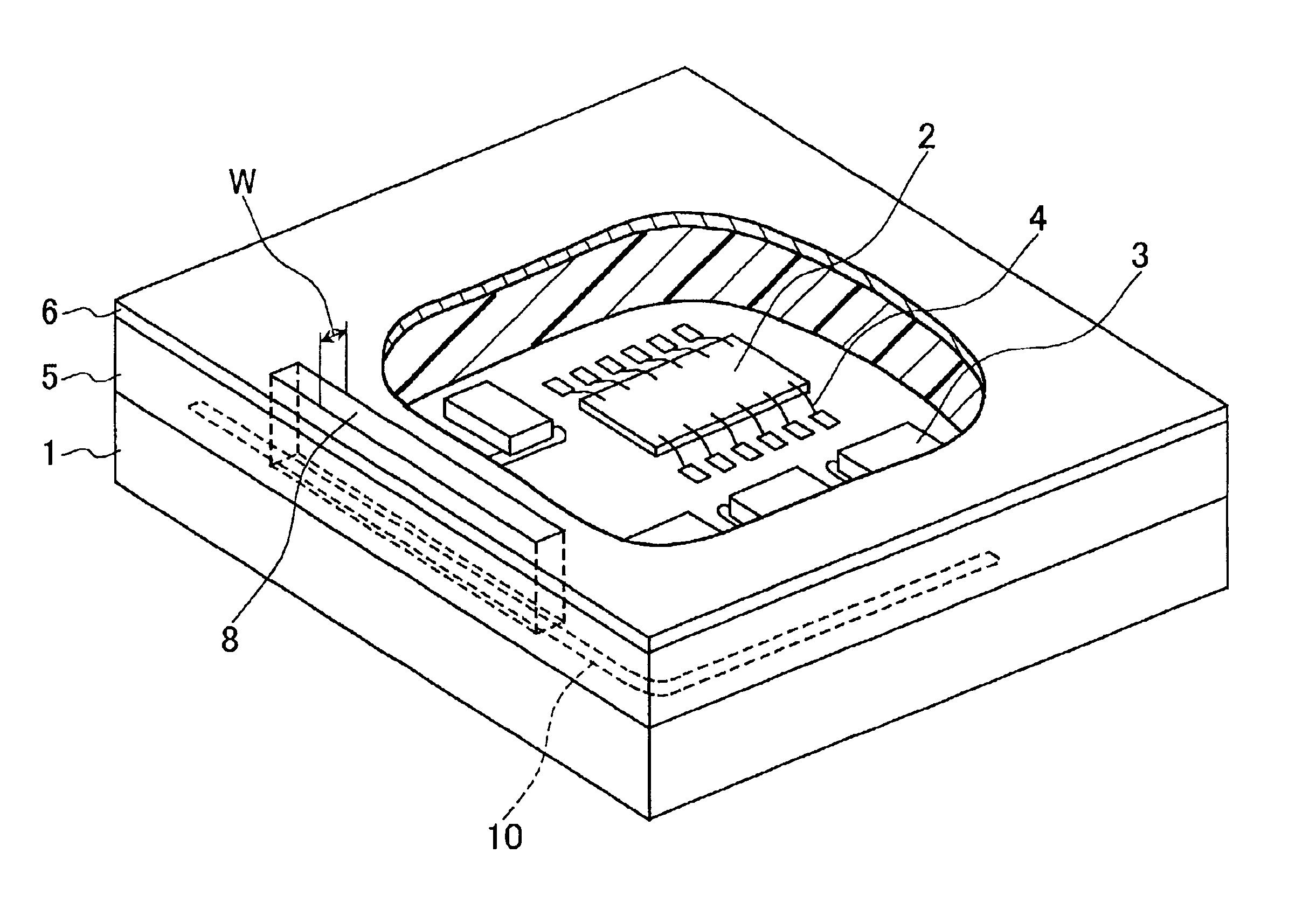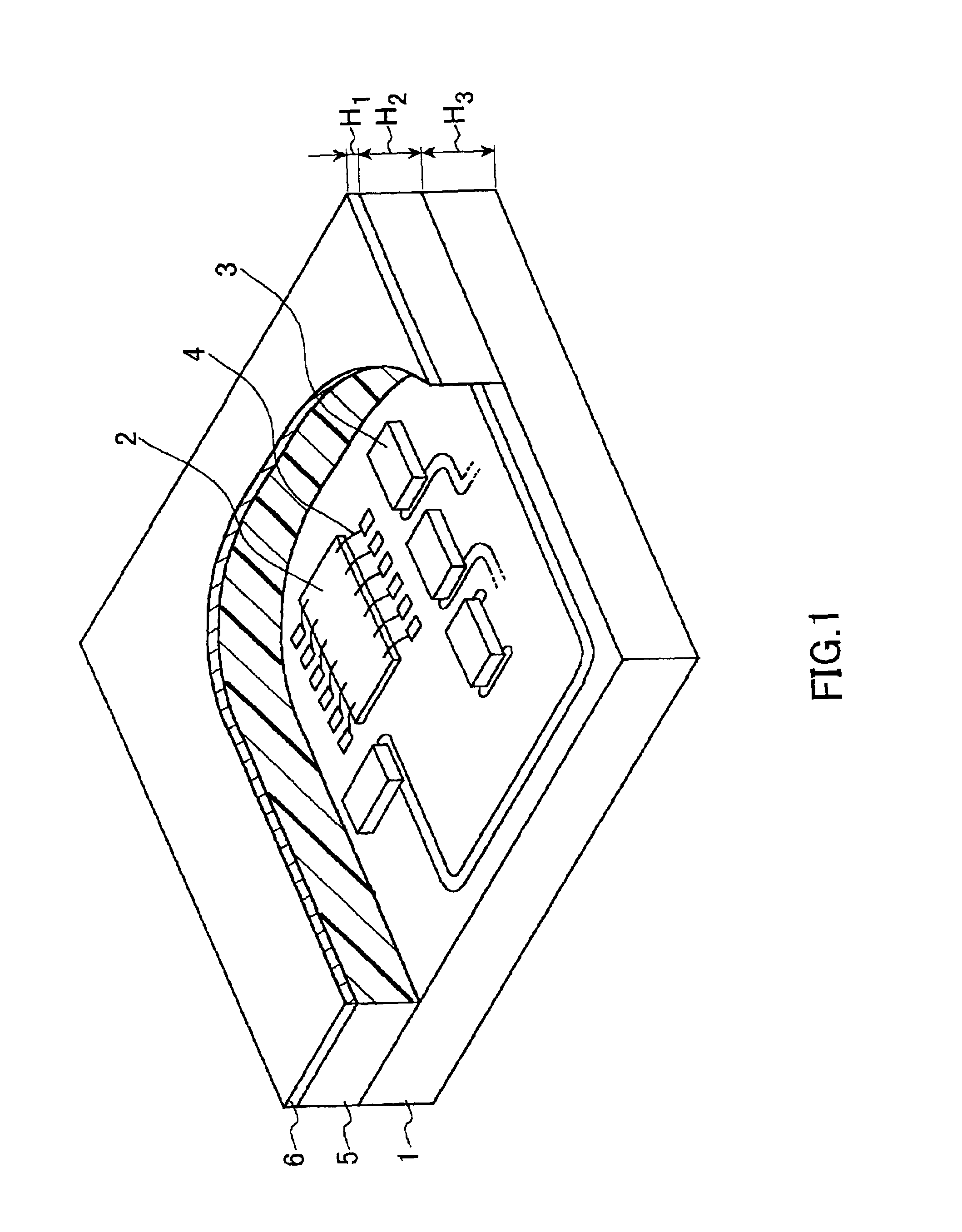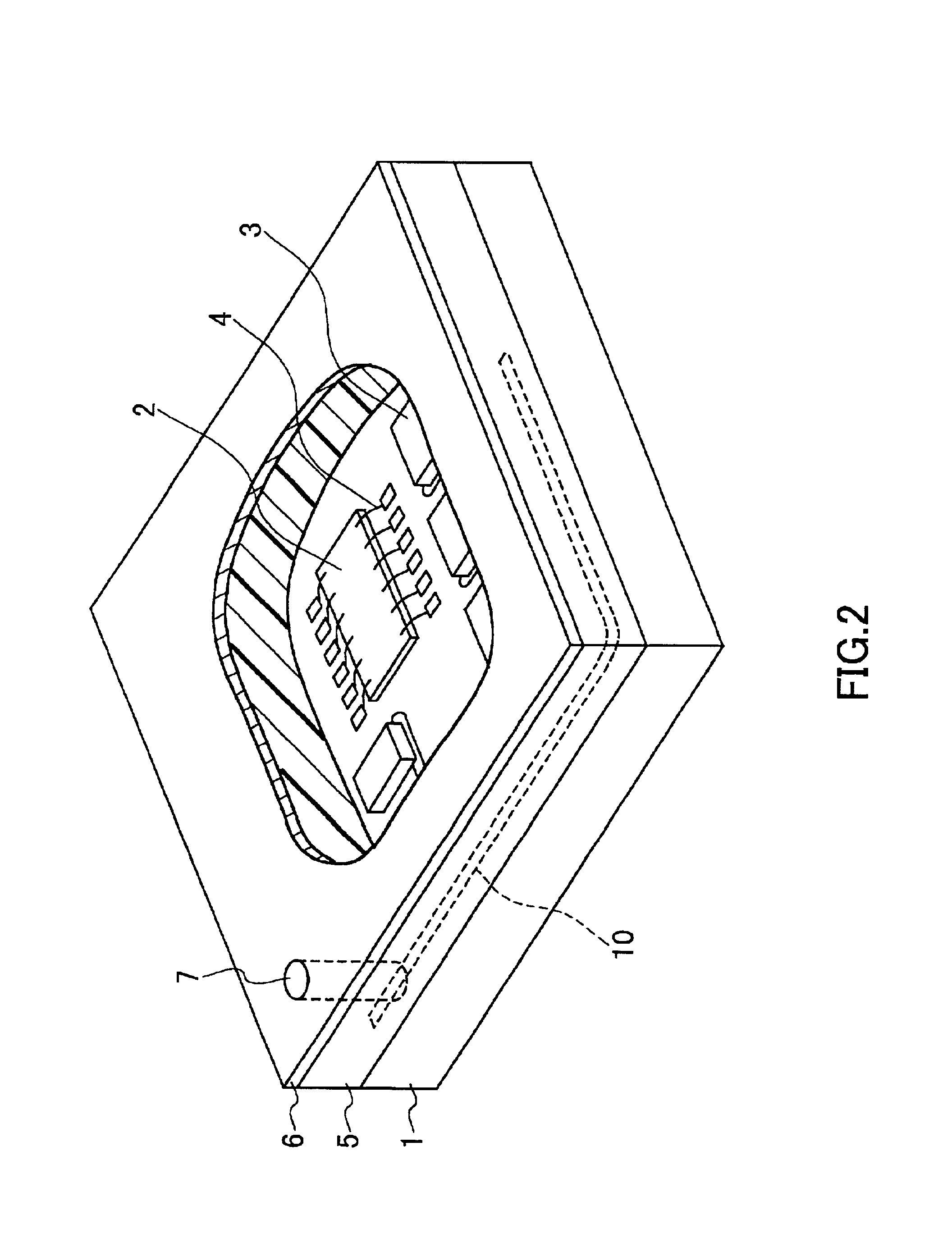High-frequency module and method for manufacturing the same
a technology of high-frequency modules and manufacturing methods, applied in the direction of printed circuit aspects, cross-talk/noise/interference reduction, non-metallic protective coating applications, etc., can solve the problem of difficult to avoid distortion due to baking, and achieve the effect of improving positioning precision and difficult to avoid distortion
- Summary
- Abstract
- Description
- Claims
- Application Information
AI Technical Summary
Benefits of technology
Problems solved by technology
Method used
Image
Examples
Embodiment Construction
[0022]In the high-frequency module according to the present invention, it is preferable that a wiring pattern that, along with the high-frequency semiconductor element, constitutes a high-frequency circuit on a surface of the substrate is connected electrically to a metal thin film in order to increase the electromagnetic wave shielding effect. More specifically, a first region in which an insulating resin is formed and a second region in which no insulating resin is formed are provided on the aforementioned surface of the substrate, and the wiring pattern exposed at the surface of the substrate in the second region may be connected electrically to the metal thin film.
[0023]When the insulating resin is provided with an aperture so that the wiring pattern is exposed, then it is preferable that the aperture of the insulating resin has a minimum width of at least 0.2 mm and at most 5 mm. If the minimum width is too small, then it becomes difficult to ensure stable electrical contact wi...
PUM
 Login to View More
Login to View More Abstract
Description
Claims
Application Information
 Login to View More
Login to View More - R&D
- Intellectual Property
- Life Sciences
- Materials
- Tech Scout
- Unparalleled Data Quality
- Higher Quality Content
- 60% Fewer Hallucinations
Browse by: Latest US Patents, China's latest patents, Technical Efficacy Thesaurus, Application Domain, Technology Topic, Popular Technical Reports.
© 2025 PatSnap. All rights reserved.Legal|Privacy policy|Modern Slavery Act Transparency Statement|Sitemap|About US| Contact US: help@patsnap.com



